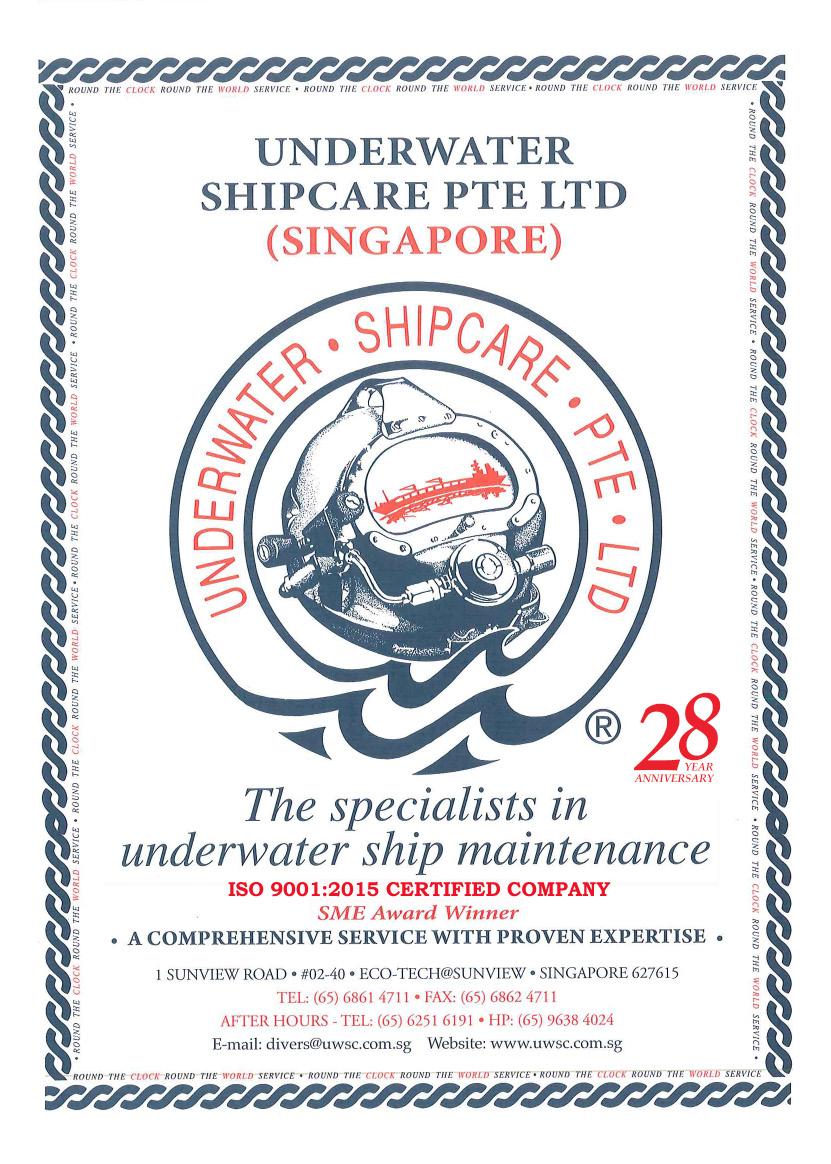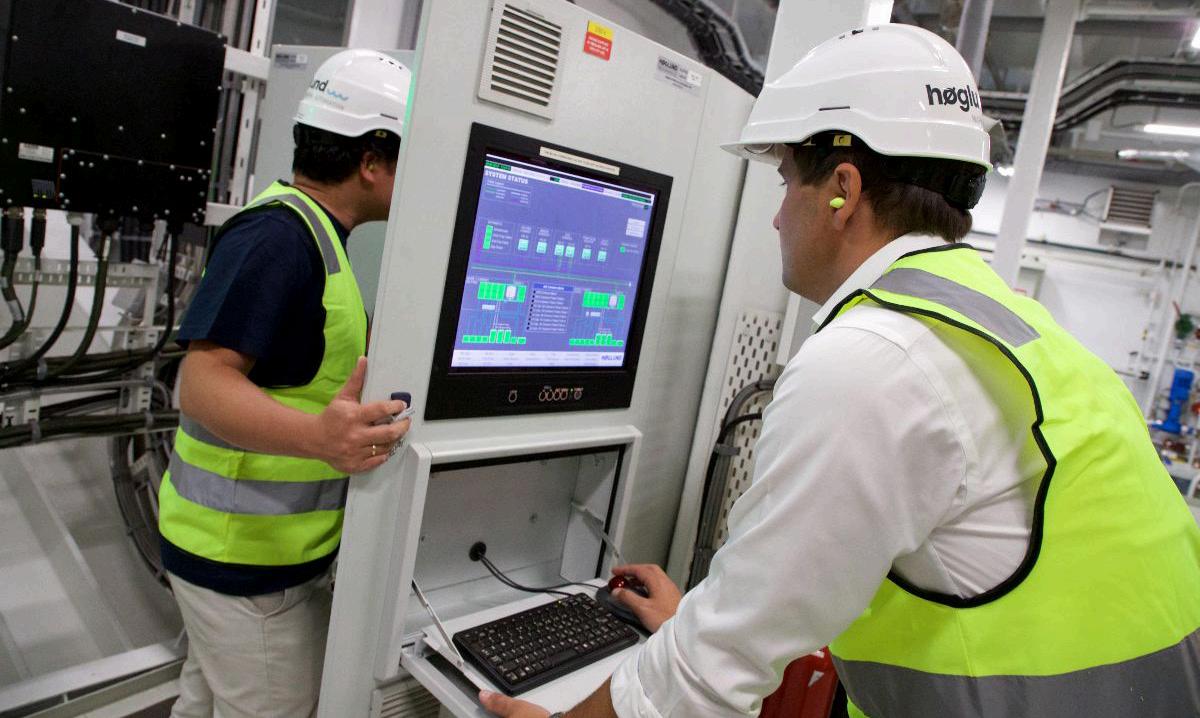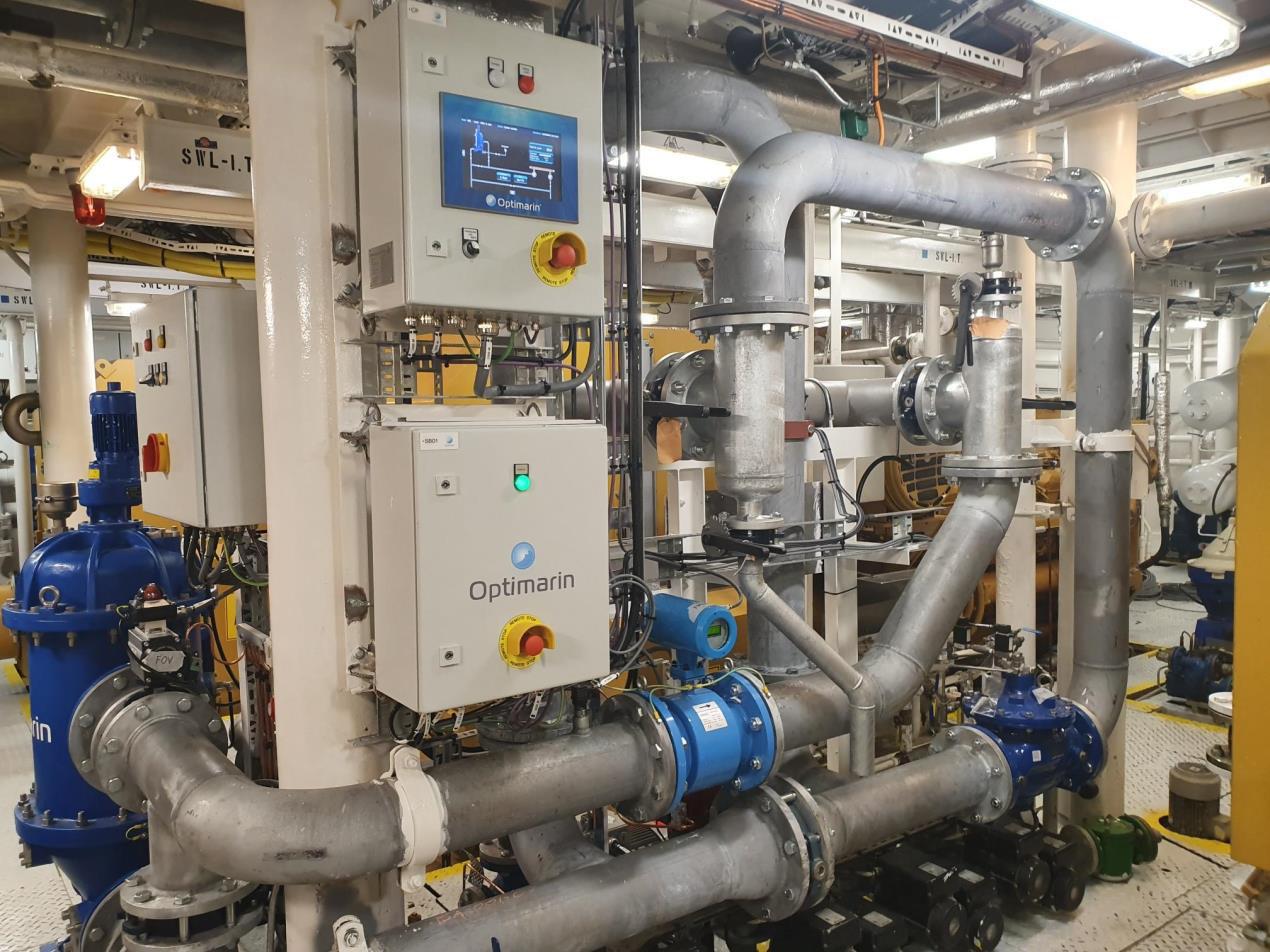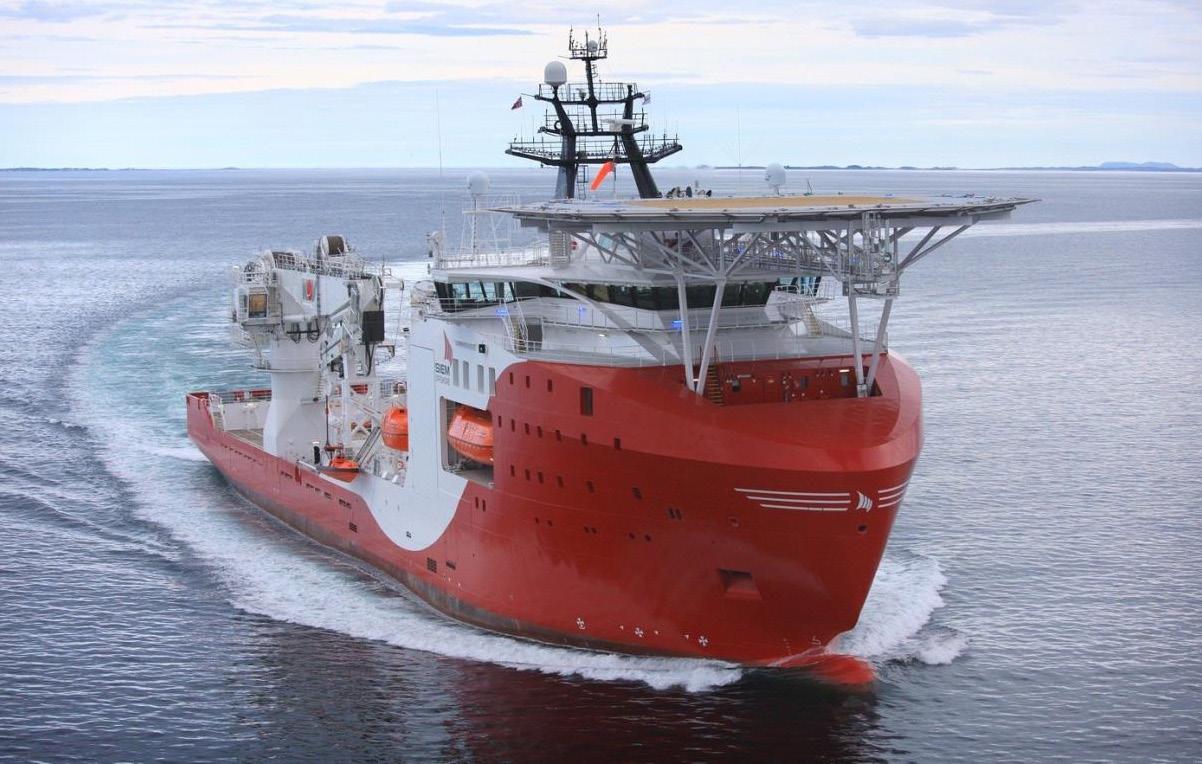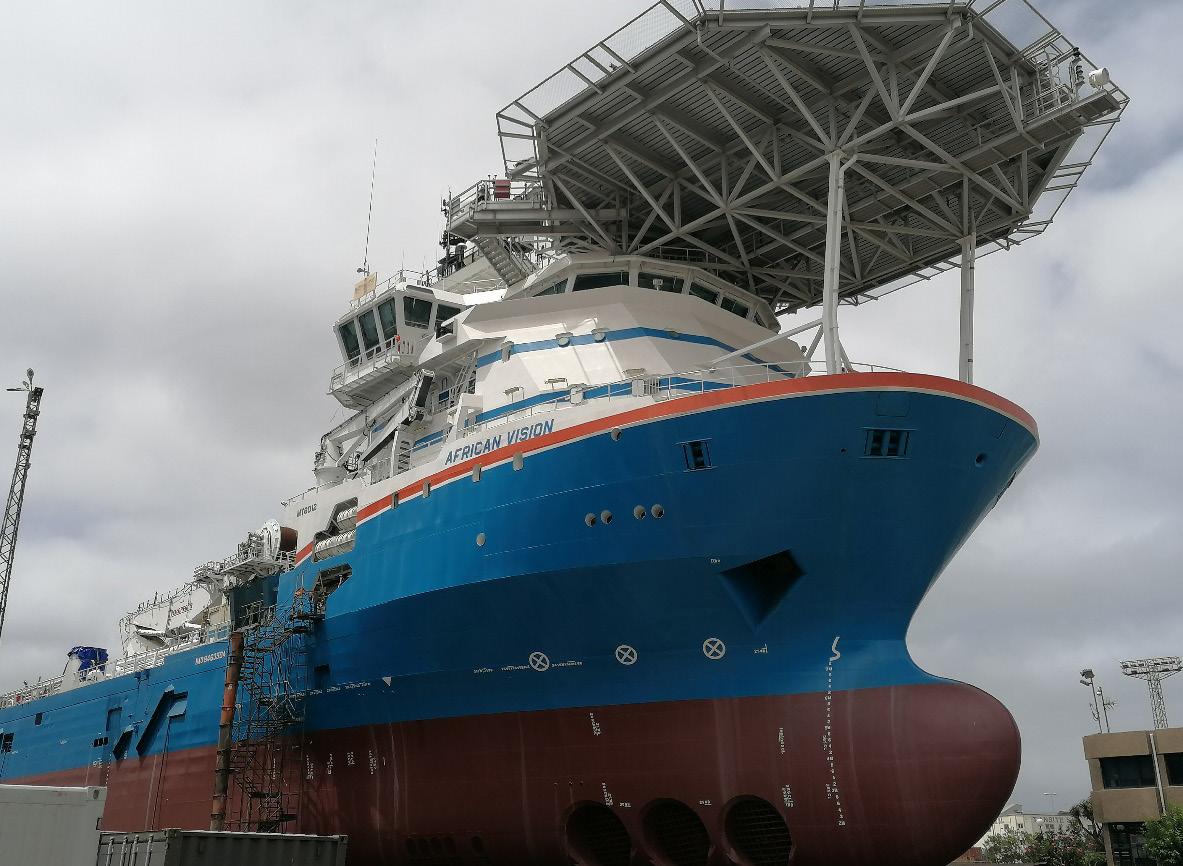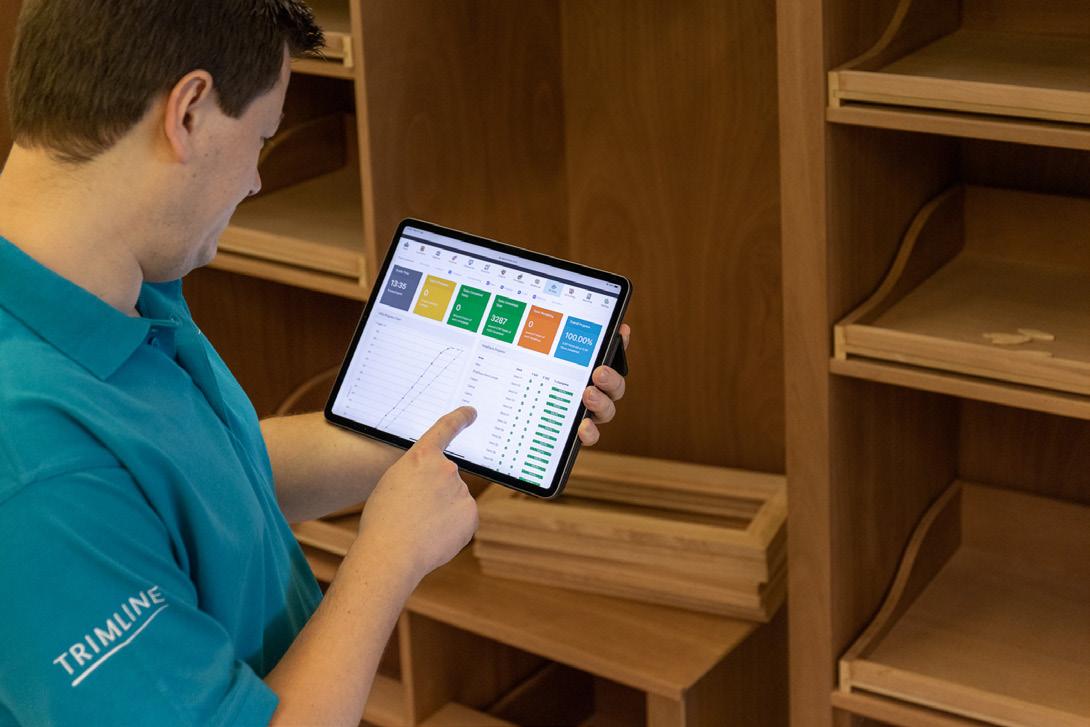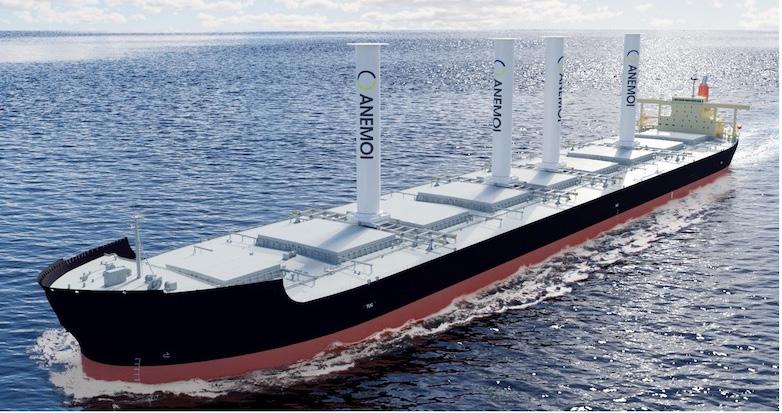
11 minute read
Fuels / Lubricants
Shell adds to its LubeMonitor service
Shell Marine has deployed a suite of enhancements to its LubeMonitor service, to go beyond all other traditional ‘cylinder condition monitoring’ programmes and position itself as the go-to place for all your engine monitoring needs. By surfacing a wider range of technical and operational insights, Shell LubeMonitor lets users better understand their ship’s engine performance, ensure it is operating in line with OEM recommendations and ultimately, help reduce maintenance costs.
Advertisement
While its features have become more sophisticated, Shell LubeMonitor’s user interface and reports are now simpler and aimed to deliver what users need most. Amongst its new features: • Enhanced fleet and vessel insights that go beyond traditional reporting - allowing users to compare vessels from fleet level all the way down to its cylinders – all organised in an easy-to-read manner (benefitting both on- and offshore users) • A step-by-step guide for on-board engineers who can help standardise the inspection process • A comprehensive engine inspection feature which allows inclusion of recorded measurements of piston ring clearance, piston ring coating, and liner wear. All data can be stored and organised with the photos captured, so users can come back to them at any point in time • Integration with the Shell LubeAnalyst oil condition monitoring, hence becoming a one-stop platform to easily compare all oil analysis results for the engine • Available via the internet, iOS and Android operating systems, as well as an offline logbook regardless of connectivity at sea
Gareth Lowe, Technical Product Manager for LubeMonitor at Shell Marine said, “Our goal goes beyond just making the programme an easy-to-use central data repository. By surfacing relevant information from on-board data, running parameters, lab data and inspection photos all from within LubeMonitor, we can start to deliver vital insights. This provides customers with a comprehensive picture of their engine’s health, and they can then use this information to make informed decisions on feed rates and maintenance schedules, which can help maintain optimal engine performance and lower operating costs.”
Marcus Schaerer, General Manager Services and Technical at Shell Marine said, “We always strive to do more for our customers and are pleased to bring about pioneering features in vessel monitoring solutions.”
The enhanced Shell LubeMonitor has since been rolled out to over 300 ships and has received positive feedback. According to Jong Hyun, Superintendent of Sinokor Ship Management, “In the past, we spent a great deal of time reading and comparing reports. Ever since adopting Shell LubeMonitor, it’s a welcomed change to having all our two-stroke engine monitoring needs on an intuitive, single platform. This allows us less time fussing over maintenance needs and more time to concentrate on other areas of the vessel.”
New partnership for VPS and BunkerTrace
Veritas Petroleum Services (VPS) and BunkerTrace have announced a new strategic partnership. This partnership will see VPS bring to market BunkerTrace’s ground-breaking, innovative forensic technology – starting with the launch of its Sample Assurance product.
The agreement represents a significant step for the improvement in traceability and transparency across the global marine fuel sector. As such, VPS will now provide a variety of new services to its customers – powered by BunkerTrace’s ground-breaking blockchain and synthetic DNA technology.
As these new services are rolled out, they will allow for greater efficiency across the bunkering supply chain, peace of mind in ensuring customer compliance, drastically reduce the risk of delays and disputes, support ESG objectives, and protect customers’ reputation. BunkerTrace’s Sample Assurance product is a tamper-proof embedded seal which is added to the sample cubitainer during a VPS Bunker Quantity Survey. Using the BunkerTrace mobile app, VPS surveyors digitally record the event to prove sample provenance and integrity. In the event of a dispute, the seals carry a unique code, only detectable with a BunkerTrace detection unit in a VPS lab where the sample will be checked for integrity.
Physically tagging and digitally tracing the collected samples prevents contamination and tampering, assuring the quality of the samples as evidence. This enables a clear chain of custody and conclusive evidence to authenticate representative fuel samples.
Steve Bee, Group Commercial & Business Development Director VPS, commented, “The shipping industry, like every other sector, is in the midst of a digital transformation. On top of that, there are also increasing demands for improved governance and greater transparency. In partnering with BunkerTrace, VPS is able to meet both those demands head on - leading the transition on the global marine fuel market into an age of more assurance, trust and transparency.”
Deanna MacDonald, Co-founder & CEO of BunkerTrace, commented, “BunkerTrace’s technology is genuinely ground-breaking in terms of its ability to physically tag and digitally trace marine fuel samples – underpinned by innovative blockchain and synthetic DNA technologies. What we needed was a partner that understands the growing need and demand for digital tracing and tracking services, but also has global reach, and shared ideals. In VPS we have found that, and we’re excited to see where we can take this partnership.”
Shell Marine has deployed a suite of enhancements to its LubeMonitor service
Savings possible from FuelTrust

Research from FuelTrust, the technology company dedicated to creating a trusted and sustainable fuel ecosystem for the marine industry, shows how different batches of the same grade of marine fuel (such as VLSFO or HFO) can have radically different degrees of energy intensity, offering knowledgeable fuel buyers an opportunity to pick up 3% BTU of extra energy by bunkering with a different batch of fuel and saving shipowners thousands of dollars in fuel costs.
This analysis of different fuel batches was carried out using FuelTrust’s AI-powered Digital Chemist, which simulates combustion on a molecular level to identify differences in fuel properties such as fuel quality, energy, and emissions profiles. Digital Chemist combines the known characteristics of a fuel batch, with class data on the vessel engine, and data from the day logs to accurately establish what happens when fuel is burned.
Based on analysis of 14m barrels of VLSFO fuel across 28 batches, FuelTrust found that different batches of fuels could essentially provide higher energy, without the supplier or buyer realising – for a fully laden Panamax container ship, this would equate to a 50MT saving of fuel on a voyage from Vancouver, Canada to Portsmouth, UK, or the equivalent of up to 469 NM of additional sailing distance on a typical bunker.
“This isn’t like saying there’s a difference between gas stations – it’s more like there being a huge difference in the fuel you could buy at different pumps,” explained Jonathan Arneault, CEO of FuelTrust.
This energy intensity delta could be operationally challenging as regulations on fuels tighten, and particularly if, as expected, zero carbon fuels such as methanol become widely used. Because zero-carbon fuels are less energy-dense than currently used fuels, vessels will need to carry more fuel to continue to operate in the same way. Energy intensity matters. We’re about to see fuels come through with a much lower energy density than we’re used to.”
Dr. Ram Vis, founder and director at the Viswa Group and advisor to FuelTrust, emphasised how energy density will become a major concern for fuel purchasers, “If, as expected, you need twice the amount of methanol to do the same work as a tonne of HFO, buyers are going to have to pay a lot more attention to the BTUs that they are buying, as they’ll have to squeeze every drop of energy out of their fuel. If we see the same batch-to-batch variation in zero carbon fuels as we do today with conventional fuels, this will be a real issue. Fuel buyers will need to start thinking more in terms of energy, and less in terms of volume.”
FuelTrust’s research indicates that differences in energy intensity will be matched by differences in emissions. With the proposed introduction of carbon taxes and emissions trading schemes, this could add up to thousands of dollars in taxes saved or lost, purely based on which batch of a fuel ends up in a vessel.
Launched in September this year, FuelTrust’s Bunker Insights platform uses a combination of artificial intelligence and blockchain technologies to establish an unalterable record of fuel transactions and to analyse and identify chemical risks and changes in fuel. In doing so, Bunker Insights makes it simple for ship owners and charterers to monitor and manage fuel risk, allowing the industry to adopt more sustainable practices backed by meaningful insights into the fuel lifecycle.
VPS and BunkerTrace have announced a new strategic partnership Jonathan Arneault, CEO of FuelTrust

WinGD engines to run on alternative fuels
Swiss engine designer WinGD has announced that its engines will be able to run on methanol and ammonia from 2024 and 2025 respectively. WinGD’s multi-fuel solutions will be based on their wellestablished diesel-fuelled X engines and dual-fuel X-DF engines. The ability to use zero-carbon or carbon-neutral fuels such as ammonia and methanol in both of its core engine types will give ship operators unprecedented flexibility in how they reduce emissions.
Dominik Schneiter, Vice President Research & Development, WinGD said, “Our commitment to deliver engine technologies to enable the use of clean fuels by 2025 means that ship owners and operators can already invest in ships that are ready to use ammonia and methanol today, safe in the knowledge that WinGD will have the technologies
Volkmar Galke, WinGD’s Director of Global Sales

available to power their vessels reliably, efficiently and cleanly.”
Both X and X-DF engine series are already compatible with low-carbon fuels - liquid biofuel or biogas respectively - which can provide significant reductions in greenhouse gas emissions. As one example, the tanker operator Terntank bunkered and operated its X-DF engines on liquefied biogas as long ago as 2018. The full, long-term use of carbon-neutral or zero-carbon fuels is the next step on this pathway.
Emissions from WinGD engines can already be optimised in line with IMO’s incoming Carbon Intensity Index (CII) and Energy Efficient Design Index for Existing Ships (EEXI). Hybridisation of the power arrangement is one option. WinGD offers system integration services that maximise fuel efficiency by selecting and sizing hybrid components and the electrical system in parallel with the main engine.
The timeframe for ammonia and methanol capability is part of a wider ambition to grow sales of multi-fuelled engines capable of operating on carbon-neutral fuels to 50% of the company’s orderbook by 2030. This is in line with the industry predictions of when these fuels will be available at scale and a viable fuel choice for deep-sea vessels.
“By 2030, many of the ships that will be sailing in 2050 – the date of IMO’s greenhouse gas emission reduction target - will already have been ordered,” said Volkmar Galke, Director of Global Sales, WinGD. “Our clean fuel engine technologies will be available well before then and will be based largely on our current technologies, allowing us to support ship owners and operators in their decarbonisation choices whenever they make them.”

Using hydrogen as a fuel
Finland’s Wärtsilä, together with class society RINA, ABB, Helbio - a subsidiary of Metacon AB, the Liberian Registry, and an energy major have joined forces in an effort to deliver a solution with hydrogen as fuel. The aim is to have a scalable and sustainable solution that will exceed IMO’s 2050 target for a 70% reduction in carbon intensity without the need for an extensive infrastructure investment. This offers the shipping industry a pathway to low-carbon operations within a reasonable time frame.
Current difficulties and cost considerations regarding the production, distribution, and on-board storage of hydrogen have so far limited the sector’s interest in its direct use as a marine fuel. However, by producing hydrogen on-board, and using readily available LNG, the solution becomes far more viable and in a much faster time than would otherwise be possible.
“Our gas engines are already able to use mixtures of hydrogen and LNG, and our future efforts will be to reach 100% hydrogen fuel. We are totally committed to supporting in every way possible the decarbonisation of shipping operations. This project is one more example of this commitment, and we are very pleased to be partnering with other stakeholders to make IMO’s 2050 target achievable. This project will give owners a real chance to stay ahead of the competition in terms of efficiency and sustainability,” says Lars Anderson, Director, Product Management & Sales Support, Wärtsilä Marine Power.
The concept is based on combining LNG with steam to produce hydrogen and CO2. The hydrogen produced will be used directly in a mix with natural gas in internal combustion engines or in fuel cells, thus eliminating the need for hydrogen to be stored on-board. The CO2 will be liquefied using the cryogenic stream of LNG that would be used as fuel anyway, and later disposed ashore for carbon storage. Tankers can use the stored CO2 as inert gas during discharge.
The necessary equipment can easily be fitted on the deck of a commercial vessel. This innovative concept will support the marine sector’s gradual transition from LNG to hydrogen, without any major adjustments to a vessel’s on-board technologies.
Only LNG bunkering will be required and, by progressively increasing the production of hydrogen, the consumption of fossil methane and associated methane slip will be reduced at the same rate.
Wärtsilä and ABB will support the application of hydrogen in powering internal combustion engines and fuel cells respectively, while Helbio will provide the technology and manufacturing of gas reformers. RINA and the Liberian Registry will provide advice and guidance on the application of rules and regulations for novel concept alternative designs, based on Hazid/Hazop analyses, as well as specific rules for this kind of arrangement.
SORJ
The gas reformer produces hydrogen from natural gas for use as engine fuel, while the CO2 produced is captured and stored on-board.

